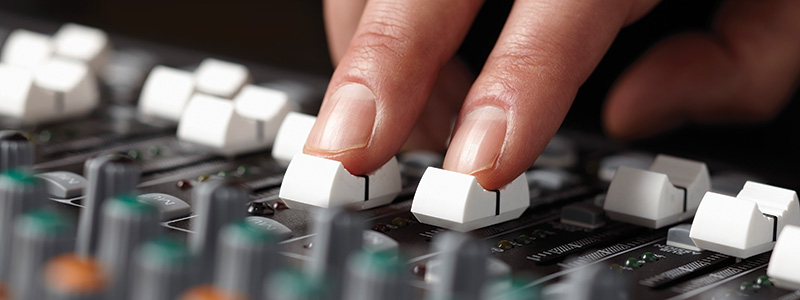
[Editor’s note: this is part of a series of articles about home recording. At the end of this article are links to other articles in this series.]
Any meaningful discussion with an recording engineer will inevitably morph into a discussion about microphones. Just as a closet full of shoes is never enough for a lot of the women I’ve known, a closet full of microphones is rarely ever enough for most recording engineers.
There are a lot of different types of microphones and there are a many, many brands, shapes and sizes to pick from. I hope to at least get you started with a road-map of what to look for in microphones and I apologize in advance for setting you on this path!
If you’re set on “recording” as a hobby or career, there’s a very good chance that you’re going to get slightly obsessed with microphones.
What IS a Microphone?
From Wikipedia:
A microphone is an acoustic-to-electric transducer or sensor that converts sound in air into an electrical signal.
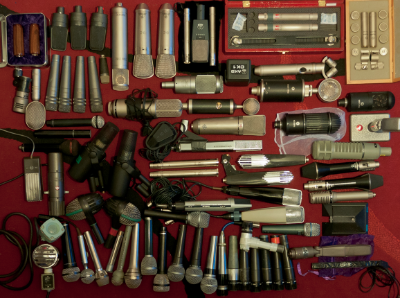 Microphones are essentially devices that translate sound that we can hear into electric signals that can be amplified, transmitted and/or recorded. Microphones are used not only in recording / broadcast, but in other less obvious applications such as hearing aids, telephones, megaphones, speech recognition and security sensors.
Microphones are essentially devices that translate sound that we can hear into electric signals that can be amplified, transmitted and/or recorded. Microphones are used not only in recording / broadcast, but in other less obvious applications such as hearing aids, telephones, megaphones, speech recognition and security sensors.
Microphones are typically classified by the transducer principle they use to capture sound (such as dynamic, condenser, ribbon, etc.).
They can be further classified by their directional characteristics or polar pattern (such as cardiod, figure-8, omni, etc.).
There are quite a few kinds of microphones – some obscure (MEMS), some old (Liquid, Carbon), some used in very specific applications (speakers – aka “sub-kick”) and some still in development (Laser). We’ll stick to some of the more common types in this article. But before we dive into that, let’s talk about the different patterns in which microphones pickup sound.
Directionality of Microphones
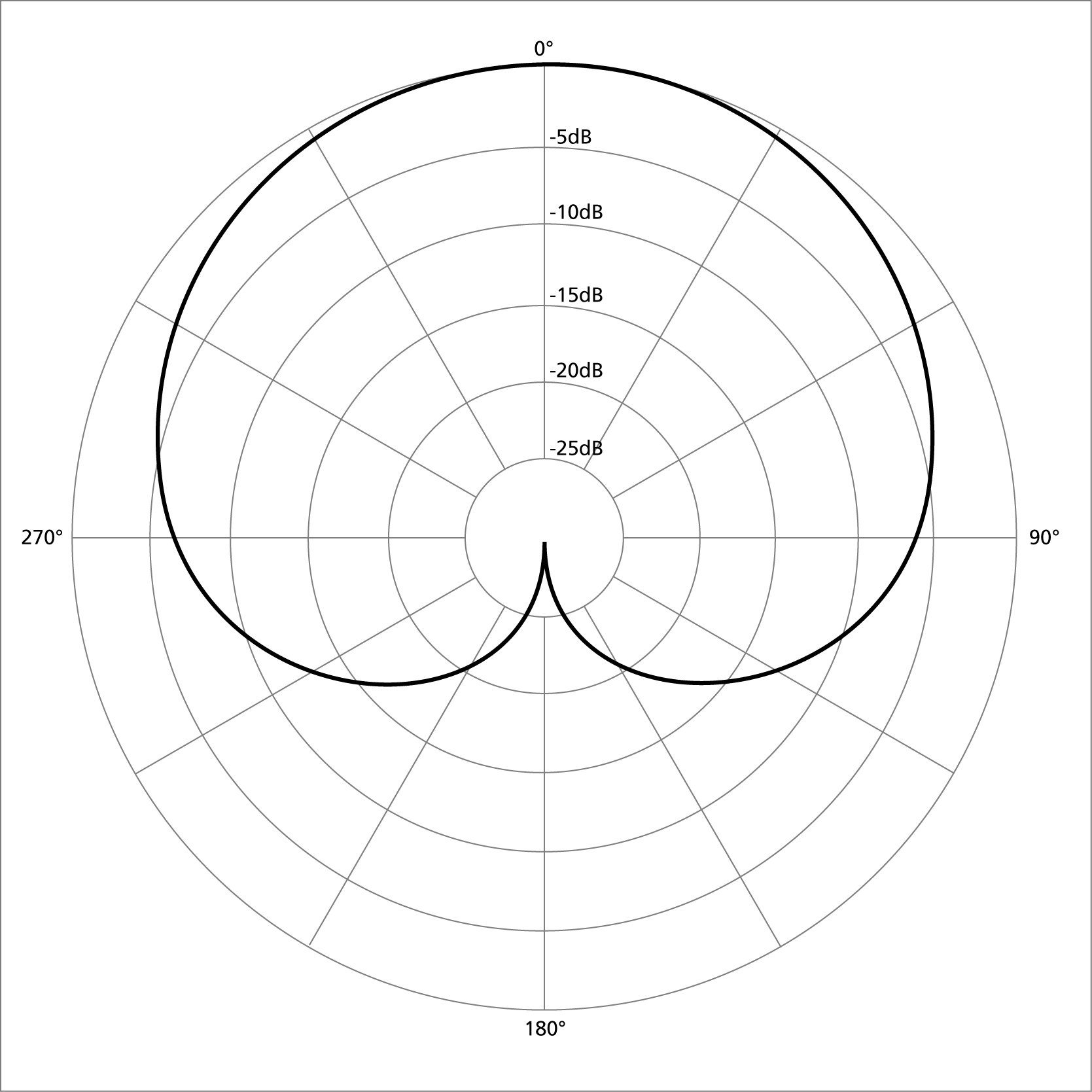 Besides the transducer principle used in microphones, you’ll most likely see terms that qualify a microphones’ polar or pick-up pattern. A microphone’s polar pattern is usually represented by a circular graph that shows how sensitive a microphone is in different directions. Each “circular” division represents 5dB of sensitivity, so you can see where the microphone picks up the strongest to the weakest sounds at different points. Each microphone has at least one polar pattern.
Besides the transducer principle used in microphones, you’ll most likely see terms that qualify a microphones’ polar or pick-up pattern. A microphone’s polar pattern is usually represented by a circular graph that shows how sensitive a microphone is in different directions. Each “circular” division represents 5dB of sensitivity, so you can see where the microphone picks up the strongest to the weakest sounds at different points. Each microphone has at least one polar pattern.
Cardiod
The most common polar pattern is the cardioid which takes its name from the approximate heart shape of the polar pattern (mind you, it’s an upside down heart). Cardioid mics reject sound from the rear of the microphone which helps to reduce feedback and can be used to capture a particular sound in a loud environment.
Another variation of a cardioid pattern is the hyper-cardiod. These mics are very similar to cardioids but have more narrow pick-up pattern. This means that they have betterside rejection than cardioid microphones but also pick-up a little sound from the rear.
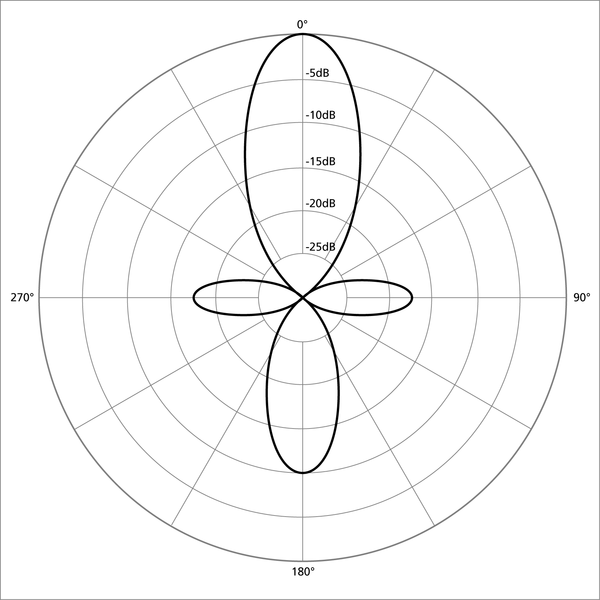 Going one step beyond hyper-cardioid gets you the shotgun pattern (so-named because the polar pattern resembles the spread of shot from a shotgun). Shotgun microphones use a design that makes their polar pattern highly directional – the capsule is placed behind an interference tube with small slits along the side. The tube uses the principle of phase cancellation to eliminate sound from the side. The longer the mic is, and the more slits it has, the better it will be at rejecting sound from the side. Shotgun mics are typically used for location sound on movie or TV sets.
Going one step beyond hyper-cardioid gets you the shotgun pattern (so-named because the polar pattern resembles the spread of shot from a shotgun). Shotgun microphones use a design that makes their polar pattern highly directional – the capsule is placed behind an interference tube with small slits along the side. The tube uses the principle of phase cancellation to eliminate sound from the side. The longer the mic is, and the more slits it has, the better it will be at rejecting sound from the side. Shotgun mics are typically used for location sound on movie or TV sets.
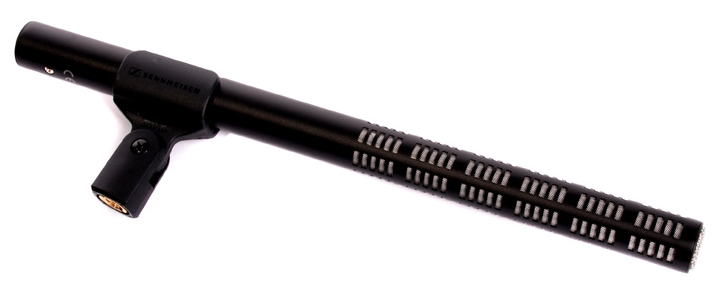
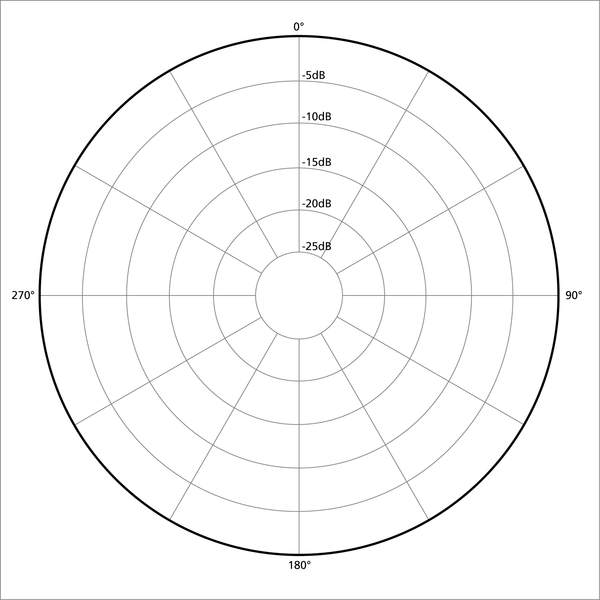 Omni-directional
Omni-directional
An omnidirectional polar pattern covers all directions and picks up all sound in a 360 degree radius.
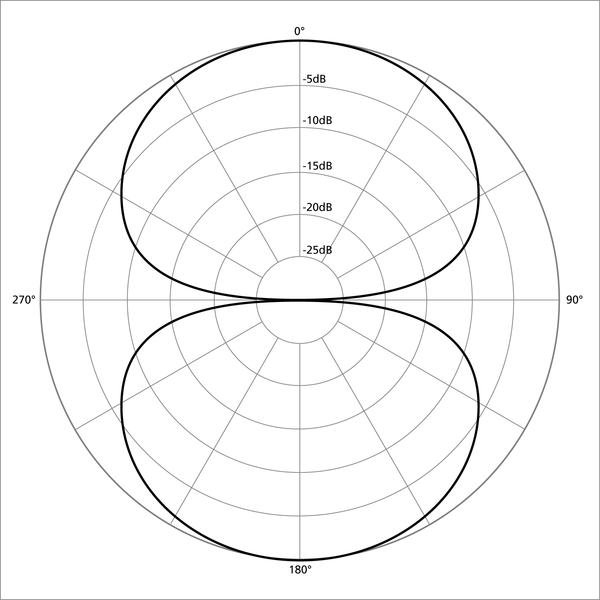 Figure-Eight
Figure-Eight
Figure-eight or bi-directional microphones pick up sound from the front and rear while rejecting sound from the sides.
Common Microphones
Dynamic Microphones
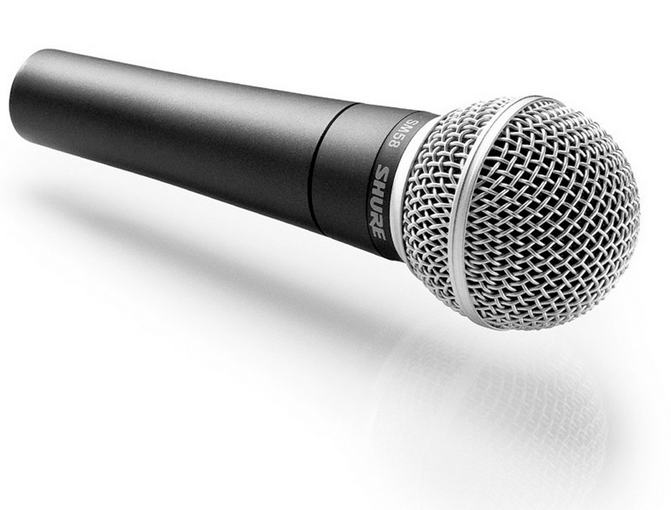 Have you been to a concert or watched a band perform on TV? If yes, then you’ve most likely seen a dynamic microphone – they’re also sometimes called moving coil or possibly induction microphones.
Have you been to a concert or watched a band perform on TV? If yes, then you’ve most likely seen a dynamic microphone – they’re also sometimes called moving coil or possibly induction microphones.
You’ll have to go back to Physics 101 in high school and dig out the relationship between magnetism and electricity. By placing and moving an induction coil (rod of iron wrapped in copper wire) in the middle of a permanent magnet, you can create an electrical signal. If you attach a diaphragm to the induction coil and have it react to sound pressure waves, you’ve created a microphone.
Dynamic microphones are relatively less expensive than other types of microphones. They don’t require any power, can take high levels of volume and they are quite durable. Dynamic microphones have a cardioid pickup pattern – rejecting most of the sound from the back and attenuating it from the side.
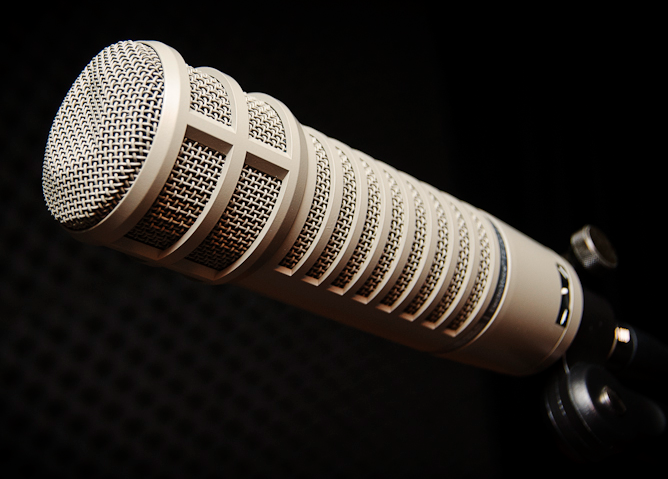 Their disadvantage lies in another physics-related concept: inertia. In order to get the diaphragm and associated mechanism moving (to create an electrical signal), the sound waves need to overcome inertia. This “sluggishness” means that dynamic mics usually need to be close to a sound source. They aren’t particularly good at reproducing high-frequencies nor are the very efficient at producing electrical signals. When plugged into a pre-amp, a dynamic microphone needs a lot more gain (introducing more noise) to make the signal useable to your recording device.
Their disadvantage lies in another physics-related concept: inertia. In order to get the diaphragm and associated mechanism moving (to create an electrical signal), the sound waves need to overcome inertia. This “sluggishness” means that dynamic mics usually need to be close to a sound source. They aren’t particularly good at reproducing high-frequencies nor are the very efficient at producing electrical signals. When plugged into a pre-amp, a dynamic microphone needs a lot more gain (introducing more noise) to make the signal useable to your recording device.
To boil it all down, dynamic microphones are fantastic choices for close-micing loud sound sources where one doesn’t particularly require a lot of detailed definition in the higher frequencies – drums and electric guitars for example. Best Buy has a nice selection of dynamic microphones like the Shure SM58 and the Blue enCORE.
Ribbon Microphone
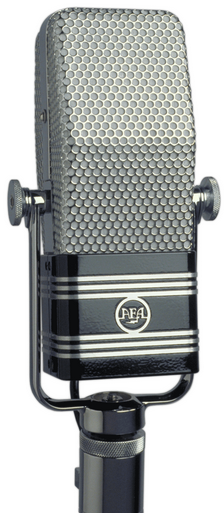 Technically, a ribbon microphone is a type of dynamic mic, but the term “dynamic mic” has, over time, become associated with referring to dynamic moving coil microphones. Ribbon microphones are fragile, relatively more expensive and more sensitive to high-sound pressure.
Technically, a ribbon microphone is a type of dynamic mic, but the term “dynamic mic” has, over time, become associated with referring to dynamic moving coil microphones. Ribbon microphones are fragile, relatively more expensive and more sensitive to high-sound pressure.
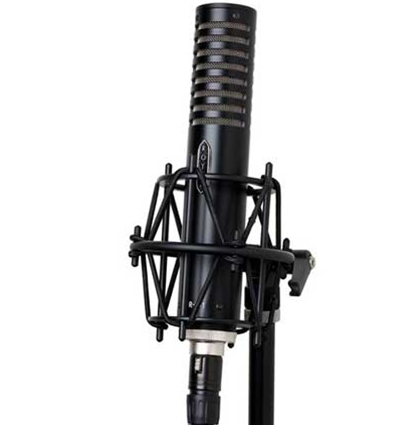 The transducer in these microphones is a thin piece of metal (the ribbon) – typically corrugated – suspended between two magnets which create a magnetic field around the suspended ribbon. The ribbon is electrically connected to the microphone’s output, and its vibration within the magnetic field generates the electrical signal.
The transducer in these microphones is a thin piece of metal (the ribbon) – typically corrugated – suspended between two magnets which create a magnetic field around the suspended ribbon. The ribbon is electrically connected to the microphone’s output, and its vibration within the magnetic field generates the electrical signal.
Ribbon microphones have a fixed figure-eight pickup pattern – they pick up sound equally well from the front and back, but attenuate it from the side. Ribbons fell out of use thru the last half of the 20th century, but have resurfaced in popularity as recording engineers began to allow more of the “room sound” into recordings.
Condenser Microphone
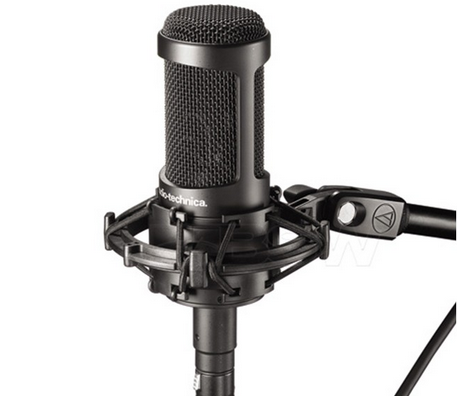 If you read Sound On Sound or other audio-related literature out of Britain, you might see these microphones referred to as Capacitor Microphones. These microphones are a bit more complicated than their dynamic cousins. They require a constant 48 volt direct current in order to operate.
If you read Sound On Sound or other audio-related literature out of Britain, you might see these microphones referred to as Capacitor Microphones. These microphones are a bit more complicated than their dynamic cousins. They require a constant 48 volt direct current in order to operate.
Bear with me through this paragraph as a bit of electrical terminology is required to understand how the innards of these microphones work. The transducer of a condenser mic is a pair of conducting plates: one is fixed and the other is a moving diaphragm – these plates are polarized by the charge of the 48 volt current. When a sound wave makes the diaphragm plate move, the spacing between the plates changes causing the capacitance (or charge) to vary. The variance in the charge creates an electrical signal that represents the vibration on the diaphragm.
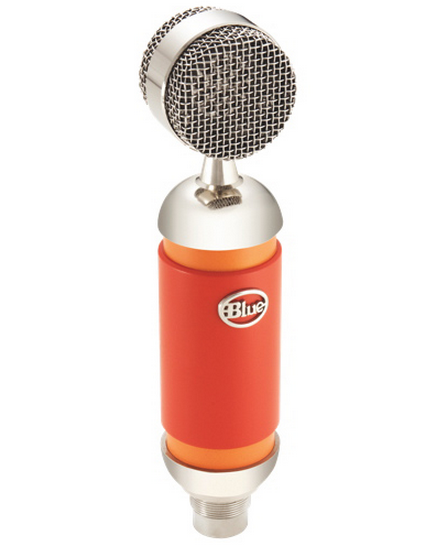 The advantage of condenser mics is that they are more sensitive than dynamic microphones and are able to better capture high frequency detail. A condenser microphone with a single transducer (capacitor) will be a fixed cardioid pattern. However, the fact that the capacitor is small and thin allows microphone manufacturers to sometimes insert two transducers, side-by-side, which (through phase-switching) allows for switchable pickup patterns. This gives you the option of choosing cardioid, figure-eight and omni directional patterns in one microphone.
The advantage of condenser mics is that they are more sensitive than dynamic microphones and are able to better capture high frequency detail. A condenser microphone with a single transducer (capacitor) will be a fixed cardioid pattern. However, the fact that the capacitor is small and thin allows microphone manufacturers to sometimes insert two transducers, side-by-side, which (through phase-switching) allows for switchable pickup patterns. This gives you the option of choosing cardioid, figure-eight and omni directional patterns in one microphone.
Check out Best Buy’s selection of condenser microphones such as the Audio-Technica AT2050 Multipattern Condenser and the Blue Spark Studio Condenser
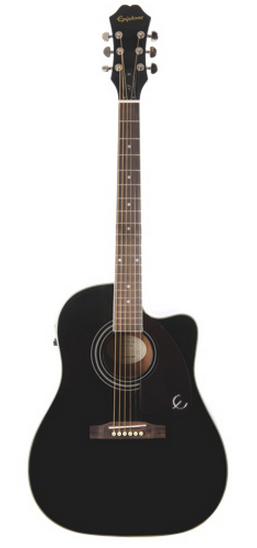 Piezoelectric Microphones
Piezoelectric Microphones
These are a really fun kind of microphone – sometimes referred to as a contact, crystal or just piezo microphone. Piezoelectricity is the ability for materials to create a voltage or electrical signal when subjected to pressure changes.
The typical use of a piezo mic is to amplify the sound of acoustic instruments such as guitars, violins and drums in a very discreet manner. Best Buy carries a selection of acoustic guitars with piezo pickups installed – such as the Epiphone AJ-220SCE.
These mics can be very small and if your goal is to minimize the evidence of microphones, then piezo mics are a good option. With a piezo mic, you can literally mic anything with a solid surface – stick a piezo on it and you’ve turned it into a musical instrument.
Check out Diego Stocco’s video Music from a Bonsai. At 00:46 he attaches a piezo microphone to the branch of the bonsai tree to create some fantastic sounds!
Couple of Other Things
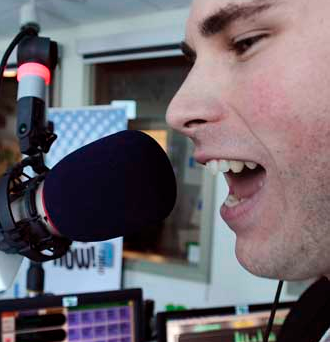 Proximity Effect
Proximity Effect
Proximity effect is a change in the frequency response of a microphone that correlates to the distance between the sound source and the microphone. This is a phenomenon that is most evident in microphones that have directional pickup patterns – more so in mics that use ports to create directionality.
The closer a sound source is to a directional microphone, the more the microphone will pickup lower frequencies. You can see this in action with talk-radio hosts or singers – they will move closer to the microphone to get a more full, deep sound to their voice.
Frequency Response Measurements
The publishing of frequency response measurements is not limited to microphones. Virtually every input or output device you research or buy will most likely be accompanied by a frequency response statistic. A frequency response diagram plots the sensitivity in decibels over a range of frequencies – usually 20 Hz to 20 kHz.
For a microphone, the diagram is supposed to show which frequencies the microphone emphasizes or attenuates (distortion) when a signal that is constant in volume is changed over a range of frequencies. There are no microphones that don’t introduce some sort of distortion into a signal.
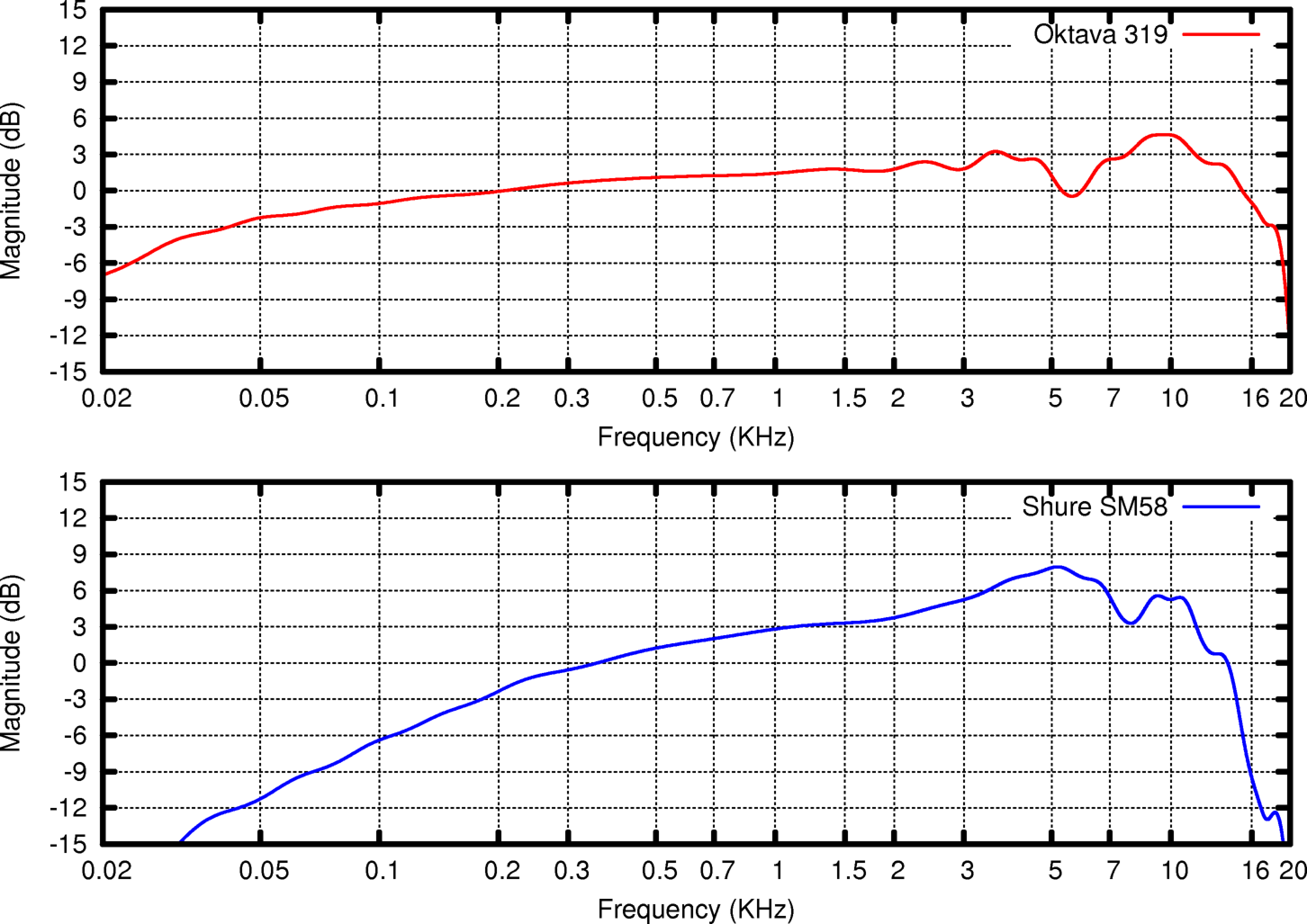
Frequency response may be less informatively stated textually like so: “30 Hz to 18 kHz ±2 dB”. This is essentially stating that the signal was distorted by the device by plus or minus 2 decibels over the frequency spectrum between 30 Hz and 18 kHz.
A grain of salt must be taken with any frequency response static as, although there are measurement standards and independent measurement bodies, manufacturers rarely use them.
New Obsessions
I mentioned this at the top of this article and I’ll mention it again here: Don’t be surprised to find yourself never being satisfied with your microphone collection – no matter if you intend to record professionally or not.
Microphones can be a lot like any collection hobby. You’ll have one for every application before you know it. If you have any questions or comments, feel free to leave them below or contact me via the social media links below. If you’ve already got a mic collection started, share your thoughts on your go-to microphone. If you don’t have one yet, what do you think is going to be your first microphone?
| What Gear Do I Need? |
Learn About Audio Software |
Learn About Audio Interfaces |
Here is a link to all the articles in the home studio series The Soundboard.



